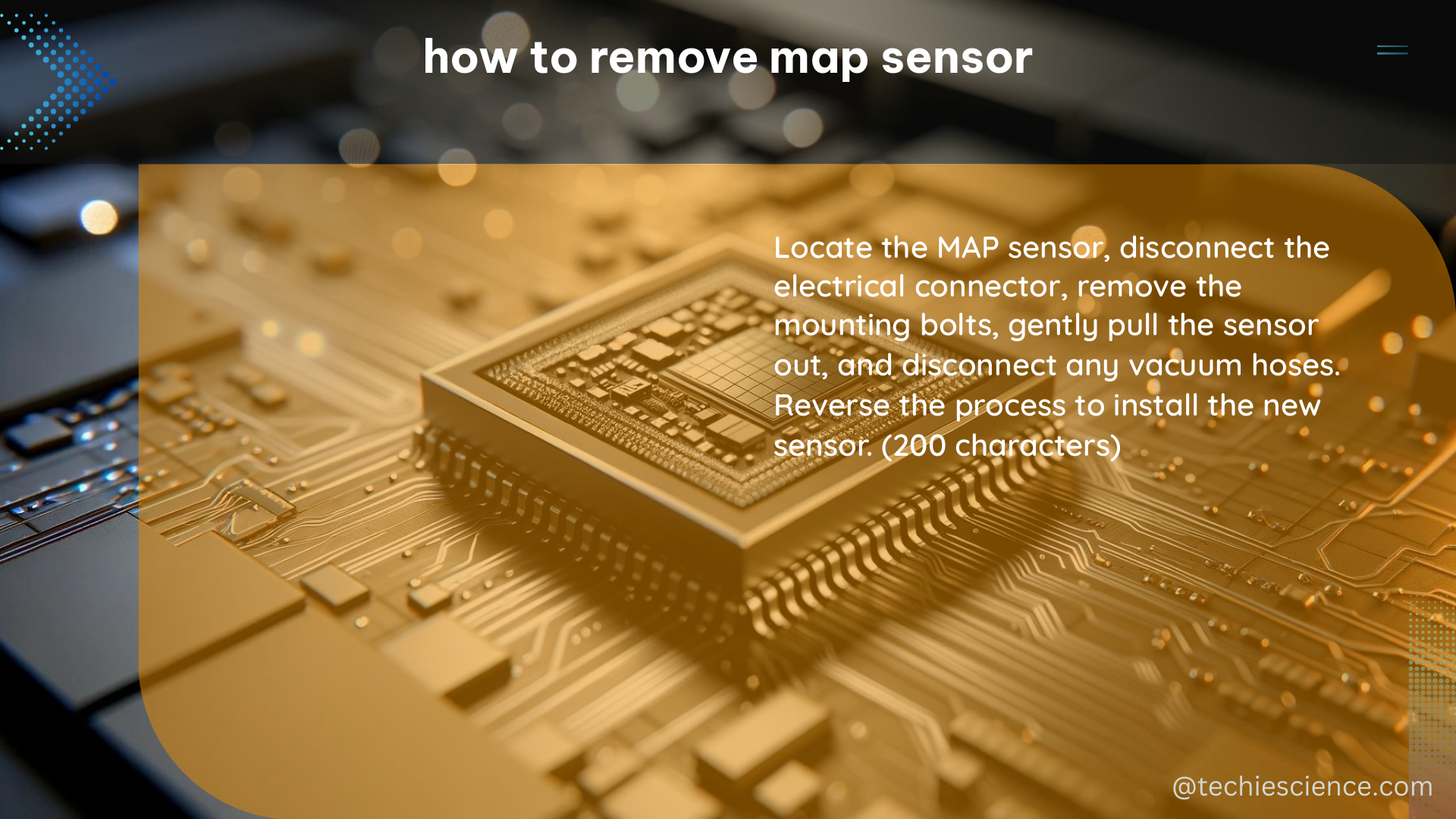The Manifold Absolute Pressure (MAP) sensor is a critical component in modern vehicle engines, responsible for providing the engine control unit (ECU) with information about the engine’s intake manifold pressure. This data is used by the ECU to optimize fuel delivery and ignition timing, ensuring efficient engine performance. However, over time, the MAP sensor may become faulty, requiring replacement. In this comprehensive guide, we’ll walk you through the step-by-step process of removing a MAP sensor, providing you with the technical details and precautions necessary to ensure a successful and safe removal.
Locating the MAP Sensor
The first step in removing a MAP sensor is to locate it within the engine bay. The MAP sensor is typically situated near the intake manifold, often on the side or top of the engine. Refer to your vehicle’s service manual or consult an online repair guide to identify the exact location of the MAP sensor in your specific make and model.
Disconnecting the Electrical Connector

Before you can remove the MAP sensor, you must disconnect the electrical connector that is attached to it. This connector provides the power and signal communication between the sensor and the ECU. Gently squeeze the tabs on the connector and pull it away from the sensor, taking care not to damage the wiring or the connector itself.
Removing the Vacuum Line
The MAP sensor is connected to the intake manifold via a vacuum line, which is responsible for transmitting the manifold pressure to the sensor. To remove the MAP sensor, you’ll need to disconnect this vacuum line. Locate the hose clamp that secures the vacuum line to the sensor and loosen it using pliers or a screwdriver. Gently pull the vacuum line away from the sensor, ensuring that you don’t damage the line or the sensor’s vacuum port.
Unscrewing the Sensor
The MAP sensor is typically held in place by one or more screws. Using the appropriate screwdriver, remove these screws and carefully pull the sensor out of the engine bay. Be mindful of any gaskets or seals that may be present, as they will need to be replaced when installing the new sensor.
Cleaning the Area
Once the MAP sensor has been removed, take the time to clean the area around the sensor’s mounting point. Remove any dirt, debris, or corrosion that may have accumulated, as this can interfere with the proper installation of the new sensor.
Installing the New Sensor
To install the new MAP sensor, simply reverse the removal process. Begin by securing the sensor in place using the screws, ensuring that they are tightened to the manufacturer’s specified torque. Next, reconnect the vacuum line, making sure that the hose clamp is securely fastened. Finally, reattach the electrical connector, taking care to align the tabs and push the connector firmly into place.
Technical Specifications
- Tools Required: Screwdriver set, pliers, vacuum pump (if necessary)
- Time Required: 15-30 minutes
- Difficulty Level: Easy to moderate
- Torque Specifications: Refer to your vehicle’s service manual for the recommended torque values for the MAP sensor mounting screws.
- Vacuum Line Size: The vacuum line connected to the MAP sensor typically ranges from 3/16 to 1/4 inch in diameter, depending on the make and model of your vehicle.
- Electrical Connector: The MAP sensor’s electrical connector is usually a 3-pin or 4-pin design, with the specific configuration varying by manufacturer.
Precautions
- Ensure that the engine is turned off and cooled down before attempting to remove the MAP sensor.
- Disconnect the vehicle’s battery to prevent any electrical accidents or damage to the ECU.
- Handle the MAP sensor with care to avoid damage to the sensitive electronic components.
- Replace any gaskets or seals that may be damaged during the removal process.
- Refer to your vehicle’s service manual for any specific instructions or torque values related to the MAP sensor.
Conclusion
Removing a MAP sensor may seem like a daunting task, but with the right tools and a methodical approach, it can be accomplished safely and effectively. By following the steps outlined in this comprehensive guide, you’ll be able to successfully remove and replace your vehicle’s MAP sensor, ensuring optimal engine performance and fuel efficiency.
References
- How to Replace a Manifold Absolute Pressure (MAP) Sensor
- MAP Sensor Replacement Cost
- Manifold Absolute Pressure Sensor (MAP Sensor) – Function, Location, Failure Symptoms & Replacement Cost

The lambdageeks.com Core SME Team is a group of experienced subject matter experts from diverse scientific and technical fields including Physics, Chemistry, Technology,Electronics & Electrical Engineering, Automotive, Mechanical Engineering. Our team collaborates to create high-quality, well-researched articles on a wide range of science and technology topics for the lambdageeks.com website.
All Our Senior SME are having more than 7 Years of experience in the respective fields . They are either Working Industry Professionals or assocaited With different Universities. Refer Our Authors Page to get to know About our Core SMEs.